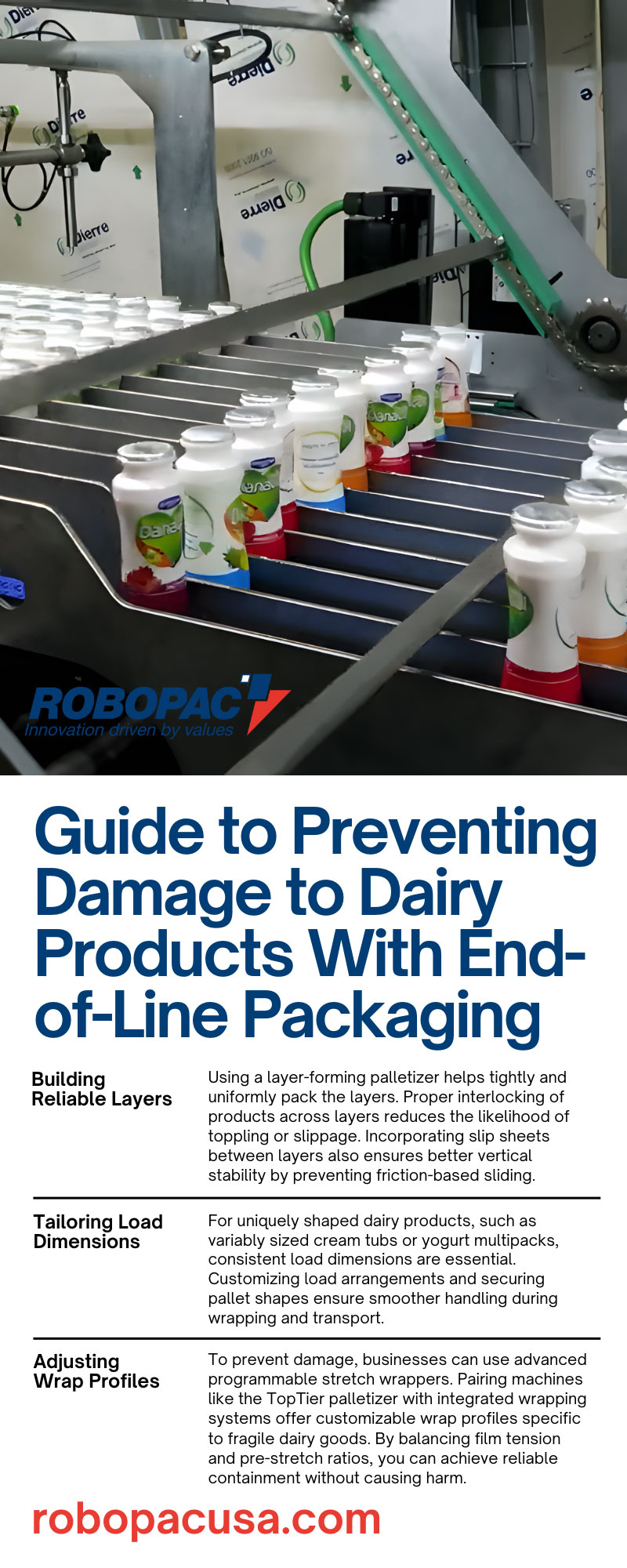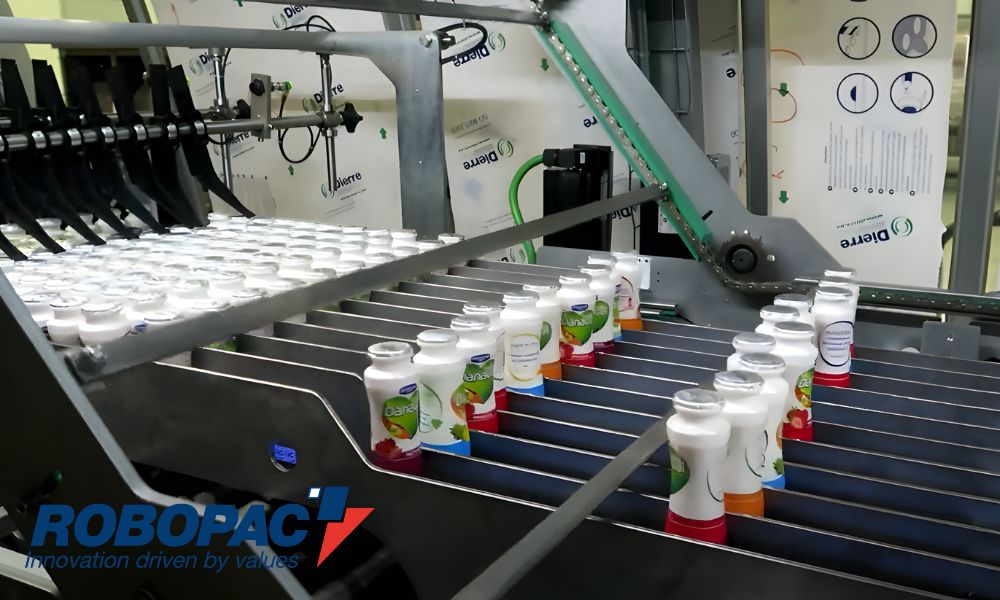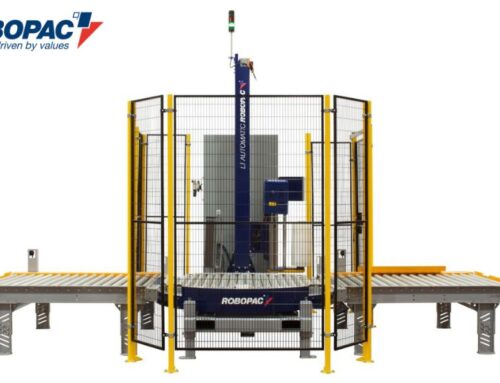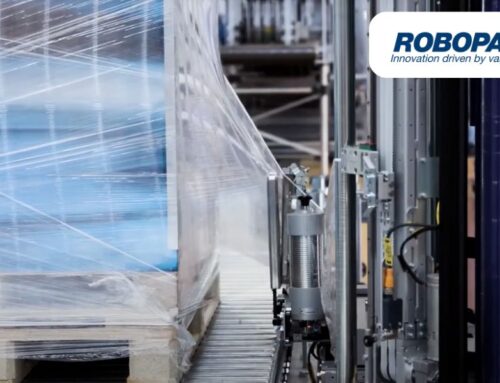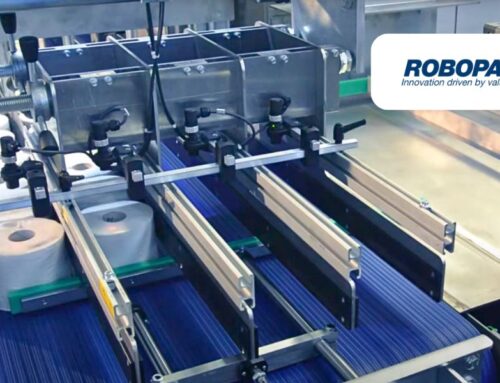Protecting dairy products during packaging and transit is crucial to avoid financial losses, ensure safety, and maintain consumer trust. Issues like crushed milk cartons or damaged yogurt tubs arise from preventable errors in palletizing, stretch wrapping, or shrink bundling.
Optimizing these end-of-line packaging processes can help ensure products arrive intact. In this guide, we’ll explain how to prevent dairy product damage with end-of-line packaging by understanding the common weaknesses, how to optimize pallet configurations for success, and how to enhance supply chain efficiency.
Understanding Dairy Packaging Vulnerabilities
To avoid issues in dairy packaging, we first must understand the typical vulnerabilities of the most common packaging for dairy items. Standard dairy packaging categories include rigid plastic containers, flexible packing pouches, and temperature-sensitive packaging.
Rigid Plastic Containers
This category includes items like milk jugs, yogurt tubs, and cream bottles that maintain their shape and protect their contents thanks to sturdy plastic materials. While they are durable, they can be prone to damage under certain conditions. For example, improper compression during wrapping or palletizing can cause cracks or surface damage, compromising the container and potentially causing leaks or contamination.
Flexible Packaging
Dairy items like cheese sticks and butter packets can come in liquid pouches with lightweight and pliable film encasements. These materials are cost-effective and versatile, but they are also more vulnerable to physical damage.
Tears, punctures, or seal damage can easily occur during stacking, rough handling, or transportation, which may lead to product spillage or spoilage. Careful load distribution and reinforced films help mitigate these risks.
Temperature-Sensitive Packaging
Many dairy products, like pre-sliced cheese, frozen desserts, and more, also come in temperature-sensitive packaging. The packaging materials for these goods can withstand specific temperature ranges, but fluctuations during transport or storage can cause issues.
For instance, warping, loosening, or condensation can compromise the packaging and impact the product’s quality. To combat this, operators must store and transport these temperature-sensitive items under controlled conditions, often with insulated or temperature-stable packaging solutions.
Optimizing Pallet Configurations
Unsteady pallets are one of the leading culprits of damaged dairy shipments. Misaligned stacks, loosely arranged layers, or irregular load shapes can cause the collapse of products during movement. The solution lies in improving pallet stability through consistent configurations.
Building Reliable Layers
Using a layer-forming palletizer helps tightly and uniformly pack the layers. Proper interlocking of products across layers reduces the likelihood of toppling or slippage. Incorporating slip sheets between layers also ensures better vertical stability by preventing friction-based sliding.
Tailoring Load Dimensions
For uniquely shaped dairy products, such as variably sized cream tubs or yogurt multipacks, consistent load dimensions are essential. Customizing load arrangements and securing pallet shapes ensure smoother handling during wrapping and transport.
Fine-Tuning Stretch Wrapping for Fragile Dairy Products
A stretch wrapper is a vital piece of dairy packaging equipment and an area where mistakes can cause significant damage. If film tension is too tight, it can crush packaging, compromise seals, or create air leaks in flexible pouches. Conversely, under-wrapped pallets lack the necessary support to stay stable during shipping.
Adjusting Wrap Profiles
To prevent damage, businesses can use advanced programmable stretch wrappers. Pairing machines like the TopTier palletizer with integrated wrapping systems offer customizable wrap profiles specific to fragile dairy goods. By balancing film tension and pre-stretch ratios, you can achieve reliable containment without causing harm.
Common Wrapping Mistakes To Avoid
Awareness is always important in preventing typical issues in wrapping dairy products. Some of the most common wrapping mistakes to avoid include overstretching the film, wrapping with insufficient tension, and using an improper film for your application.
Overstretching Film
Excessive stretching of wrapping film can create significant pullback forces. This tension may compress containers, damage products, or distort flexible materials such as cartons or plastic containers. Over time, this can weaken the load’s integrity, making it prone to damage during storage or transit. Avoid overstretching by checking the film’s stretch limits and adjusting your machine settings.
Loose Wrapping
On the other side of wrapping, you don’t want to degrade the tension of the wrap so much that it’s loose and makes the palletized goods unstable. Loose wraps allow movement during transit, increasing the risk of toppling or collapse. This causes potential product loss and is hazardous for handlers. To prevent this, ensure you apply your film with the right amount of tension to create a secure and stable load.
Incorrect Film Selection
Using the wrong type of film for your products is another common but avoidable mistake. Each film is intended for specific weights, fragility levels, and environmental factors. For example, heavier loads require stronger films, while cold-chain applications need films that maintain their strength and flexibility in low temperatures. Always choose a film rated to handle your product’s unique needs.
Managing Heat in Shrink Bundling Processes
Shrink bundling and wrapping are particularly popular for cheese packs, yogurt multipacks, and dairy snacks. However, excessive heat during this process can deform, melt, or loosen seals, causing aesthetic and functional damage.
Calibrating Shrink Tunnels
To prevent damage, shrink tunnels must strike a balance between temperature and conveyor speed. Machines that run too hot or too quickly risk causing warping or incomplete seals. Regularly calibrate tunnel temperatures based on your specific products and their packaging materials.
Selecting the Right Film
Low-melt, stretchable films for fragile products provide strong seals while minimizing deformation risks. Couple such film with thoughtful temperature management to ensure the durability and aesthetic ability of the film in post-shrink wrapping.
Accounting for Cold Chain Challenges
Cold storage is another necessary consideration for dairy packaging. When products move from room temperature to refrigerated or frozen environments, materials can contract, tightening wraps excessively. This puts additional pressure on the packaging and increases the chance of cracks.
Testing in Real-World Conditions
Test packaging stability by replicating cold storage conditions on a smaller scale before commencing full-scale production. Such tests identify weak points that may not be apparent at room temperature, reducing the risk of widespread issues later.
Adjusting Wrap Techniques for Cold Storage
Allow for adequate airflow during cold storage by adjusting wrap patterns to avoid cold spots. Using films that provide flexibility at low temperatures significantly enhances resilience during storage and transit.
Prioritizing Regular Maintenance
Even the most sophisticated packaging systems can fail without consistent maintenance. Faulty equipment, misaligned sensors, or worn film blades can cause errors and inconsistencies that compromise product safety.
Scheduled Maintenance Checks
Inspect your stretch wrappers and palletizers regularly. Verify the correction functioning of film tensioners, turntables, and blade heaters. Proactive maintenance minimizes downtime and prevents surprise system failures.
Staff Training
Equip your operators and maintenance team with proper training to recognize and address minor issues before they escalate. Education remains critical for consistently smooth packaging operations.
Transforming Dairy Packaging for a Safer Future
We hope our guide to preventing damage to dairy products with end-of-line packaging has educated you on how to maintain the quality of your products in packaging and protect your brand. Evaluating processes like pallet stability, shrink tunnel heat regulation, and cold-chain adjustments can minimize costly errors.
Investing in advanced machinery and regular maintenance also keeps operations efficient and competitive. Robopac USA offers expert assessments and tailored solutions to enhance your packaging process and safeguard your products. Contact us today to elevate your operations!
